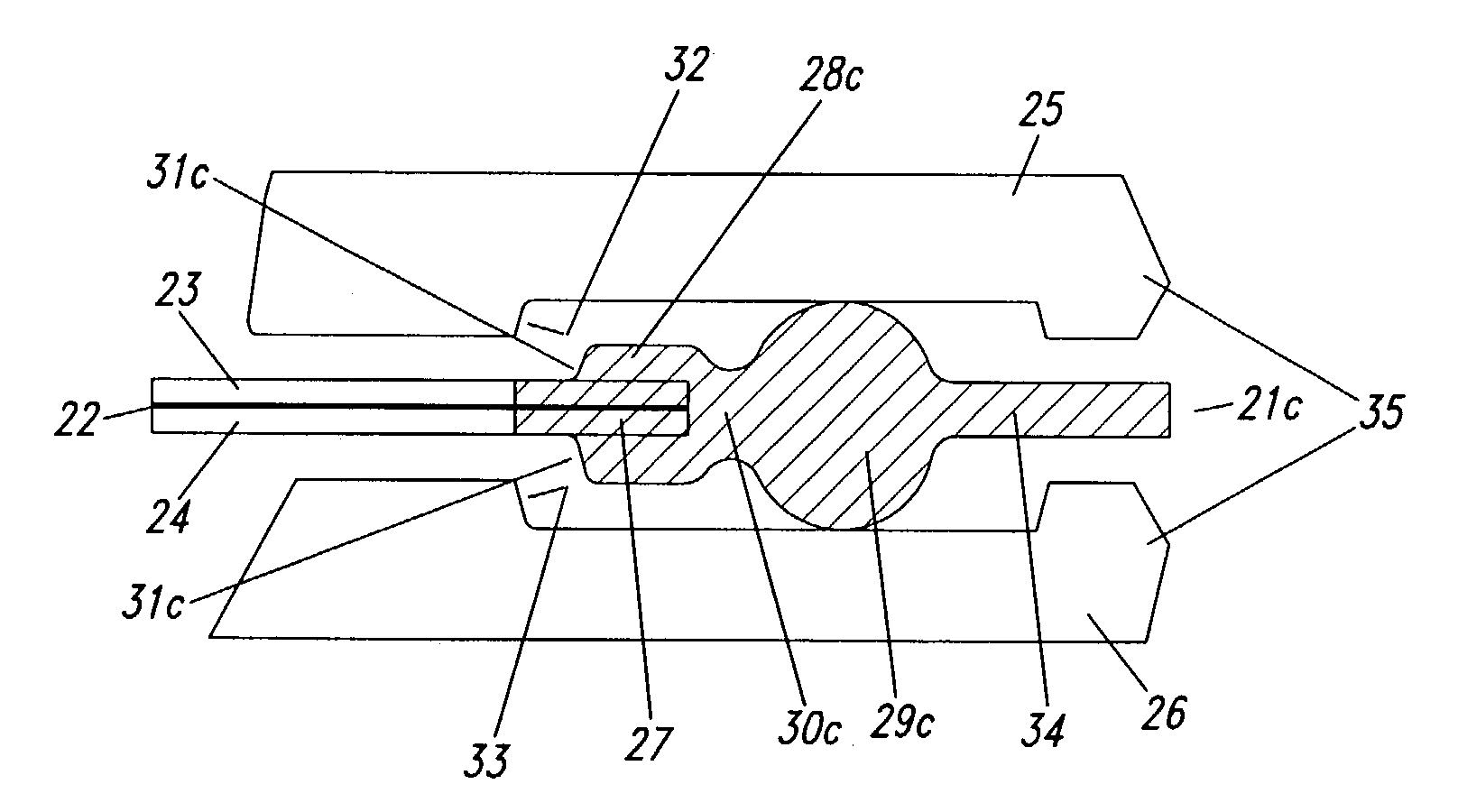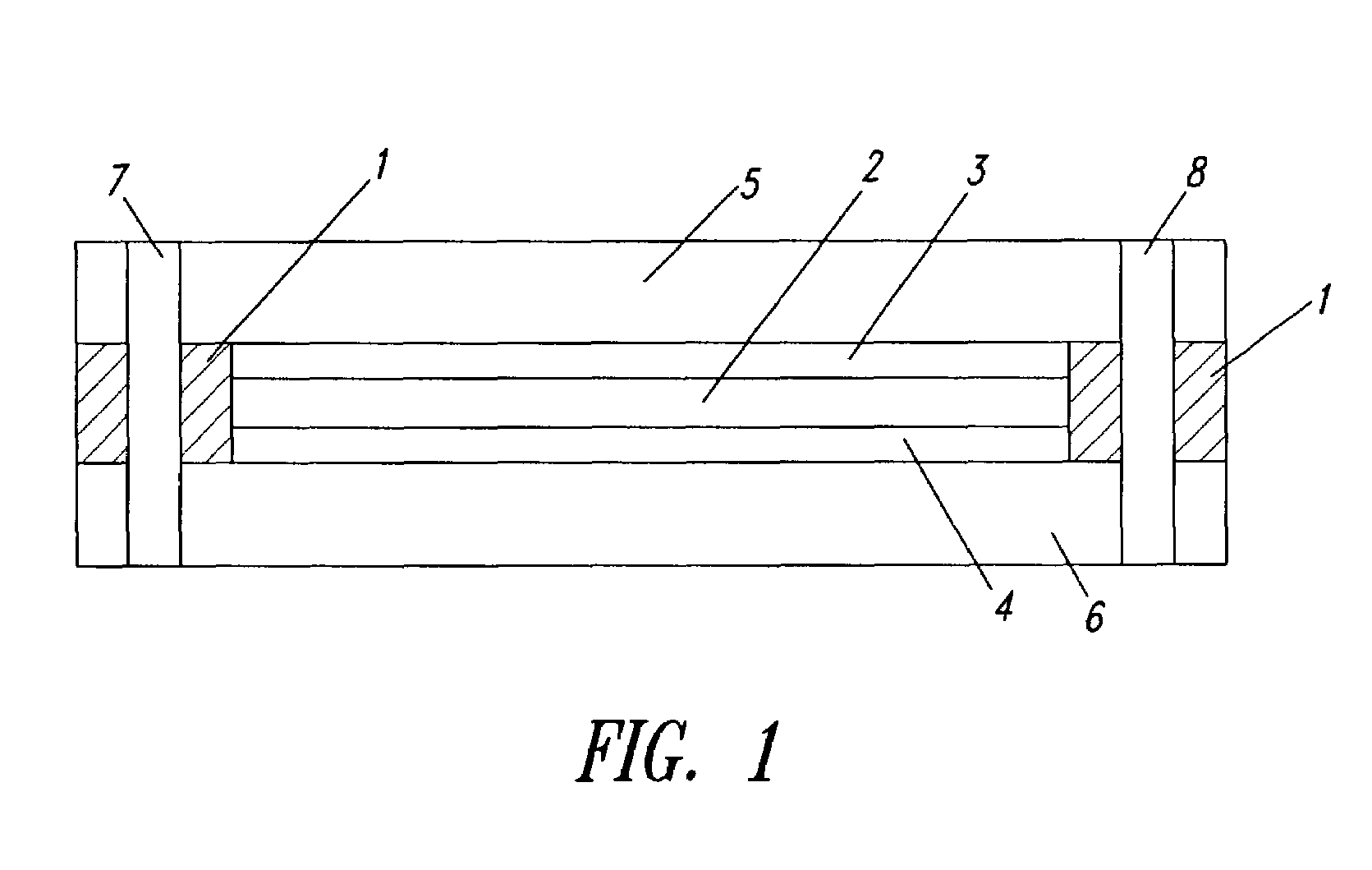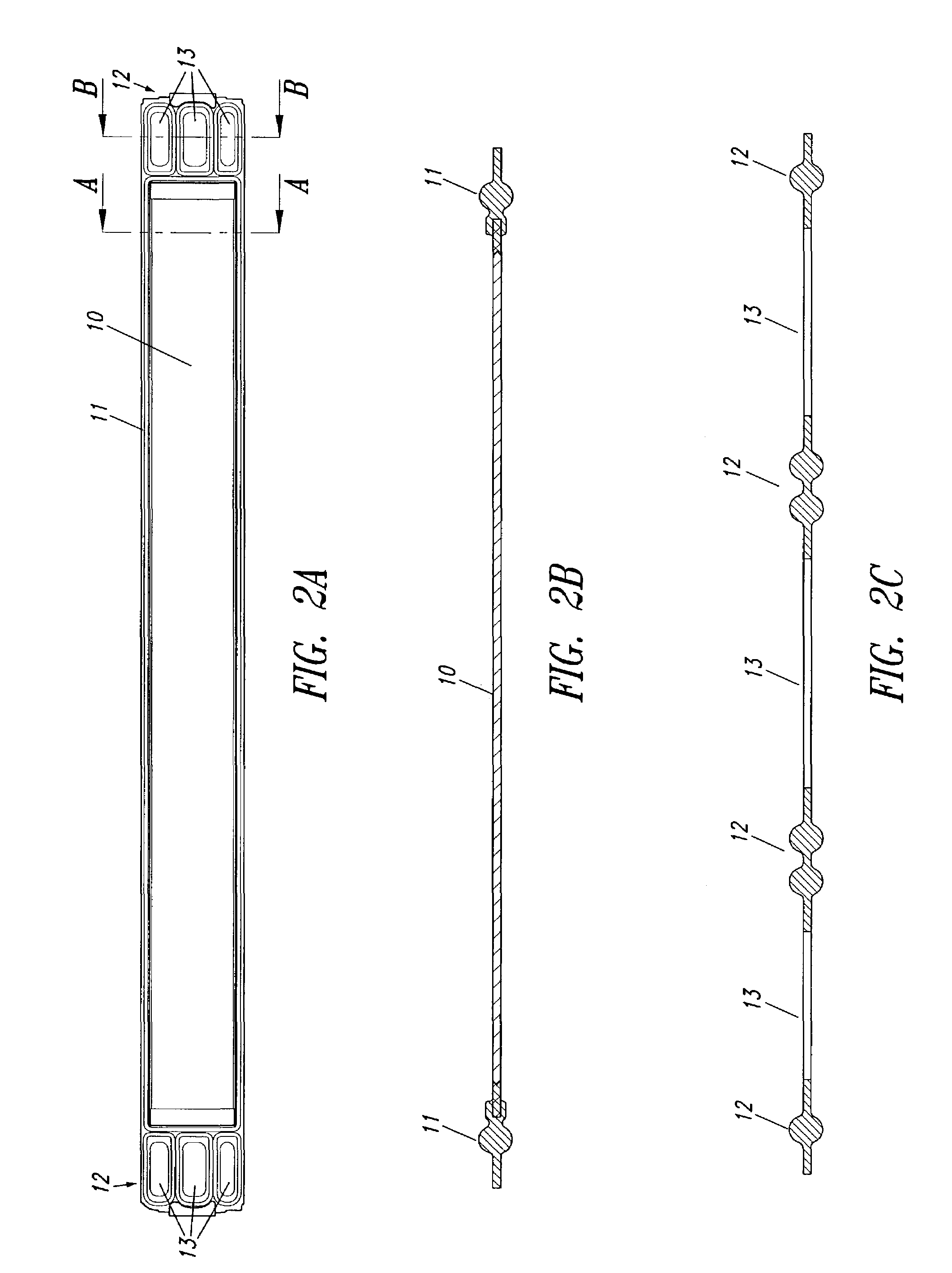Membrane electrode assembly with integrated seal
a membrane electrode and integrated seal technology, applied in the field of membrane electrode assemblies, can solve the problems of excessive stress experienced in the region where the seal is located, damage and delaminate the electrode, and provide leakage paths around the edge of the mea, so as to reduce the risk of seal failure and reduce the concentration of shear stress
- Summary
- Abstract
- Description
- Claims
- Application Information
AI Technical Summary
Benefits of technology
Problems solved by technology
Method used
Image
Examples
examples
[0052]In the following, conventional MEA subassemblies were employed having a NAFION® 112 electrolyte membrane and electrodes which contained gas diffusion layers made of TGP-60, and a carbon fiber paper product of Toray Industries. A silicone elastomer material was selected for use as the seal material which had similar mechanical characteristics to the aforementioned low viscosity silicones.
[0053]The interface shear stress limit for this seal material / electrode combination was determined empirically as described above. A silicone sample (4 mm square in section and 2 mm high) was cast into / onto a TGP-60 carbon fiber paper layer. Under load, the sample sheared at the interface with the carbon fiber paper at 25% compression. This corresponded to a maximum stress at the interface (or interface shear stress limit) of 1.2 MPa.
[0054]Two different MEA with integrated edge seals designs were then evaluated which employed these materials. A comparative embodiment was similar to that depicte...
PUM
| Property | Measurement | Unit |
|---|---|---|
| thickness | aaaaa | aaaaa |
| thickness | aaaaa | aaaaa |
| thick | aaaaa | aaaaa |
Abstract
Description
Claims
Application Information
 Login to View More
Login to View More - R&D
- Intellectual Property
- Life Sciences
- Materials
- Tech Scout
- Unparalleled Data Quality
- Higher Quality Content
- 60% Fewer Hallucinations
Browse by: Latest US Patents, China's latest patents, Technical Efficacy Thesaurus, Application Domain, Technology Topic, Popular Technical Reports.
© 2025 PatSnap. All rights reserved.Legal|Privacy policy|Modern Slavery Act Transparency Statement|Sitemap|About US| Contact US: help@patsnap.com



